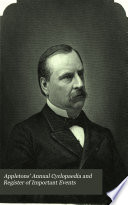 | George T. Powell - 1888 - 180 pages
...separate shell on top, the same as tried at first. The second method consisted of mixing a concrete of one part of cement, two parts of sand, and four parts of gravel, laying it evenly and ramming it until a layer of from 3-4 of an inch to 1 1-4 inches appeared... | |
 | George T. Powell - 1888 - 182 pages
...separate shell on top, the same as tried at first. The second method consisted of mixing a concrete of one part of cement, two parts of sand, and four parts of gravel, laying it evenly and ramming it until a layer of from 3-4 of an inch to I 1-4 inches appeared... | |
 | 1889 - 892 pages
...65 and 02 feet. The cylinders are sunk with the aid of compressed air, by digging out a space large enough to admit of placing one plate, which is then...electric light is used for the work in the cylinder. The Bilearagna Canal.— The discussion of the treaty proposed between the United States and Nicaragua... | |
 | 1910 - 432 pages
...Seven-day, fourteen-day, and twenty-eight-day compression tests were made on concrete cubes made of mixtures of one part of cement, two parts of sand, and four parts of broken stone passing through a screen of one and one-half inch mesh, separate tests being made tor each brand of... | |
 | Sacramento (Calif.). Citizens' Water Investigation Committee - 1901 - 160 pages
...proportions of the cement, sand and gravel or broken stone used in making the concrete shall be by measure, one part of cement, two parts of sand and four parts of gravel or broken stone. The mixing of the concrete shall be in suitable beds or by machinery, in a... | |
 | Citizens' Water Investigation Committee of the City of Sacramento - 1901 - 144 pages
...proportions of the cement, sand and gravel or broken stone used in making the concrete shall be by measure, one part of cement, two parts of sand and four parts of gravel or broken stone. The mixing of the concrete shall be in suitable beds or by machinery, in a... | |
 | Citizens' Water Investigation Committee of the City of Sacramento - 1901 - 144 pages
...proportions of the cement, sand and gravel or broken stone used in making the con-crete shall be by measure, one part of cement, two parts of sand and four parts of gravel or broken stone. The mixing of the concrete shall be in suitable beds or by machinery, in a... | |
 | 1908 - 604 pages
...their porosity. However, in certain proportions in which the cinder is not so predominant — as in a mixture of one part of cement, two parts of sand, and three parts of cinders — the corrosive effect on the steel is inconsiderable if the concrete is properly... | |
 | Institution of Municipal Engineers (Great Britain) - 1903 - 514 pages
...Reservoir. — The subsoil consists of boulder clay. The walls are constructed of cement concrete composed of one part of cement, two parts of sand, and four parts of shingle. They vary in thickness from 5 feet at the base to 18 inches at the top, and are lined with... | |
 | 1905 - 1026 pages
...it must be clean and vary in size from j to 1 inch. For beams, the proportion of concrete shall be one part of cement, two parts of sand, and four parts of broken stone. For floor slabs, the proportion shall be one part of cement, two and one-half parts of sand, and five... | |
| |